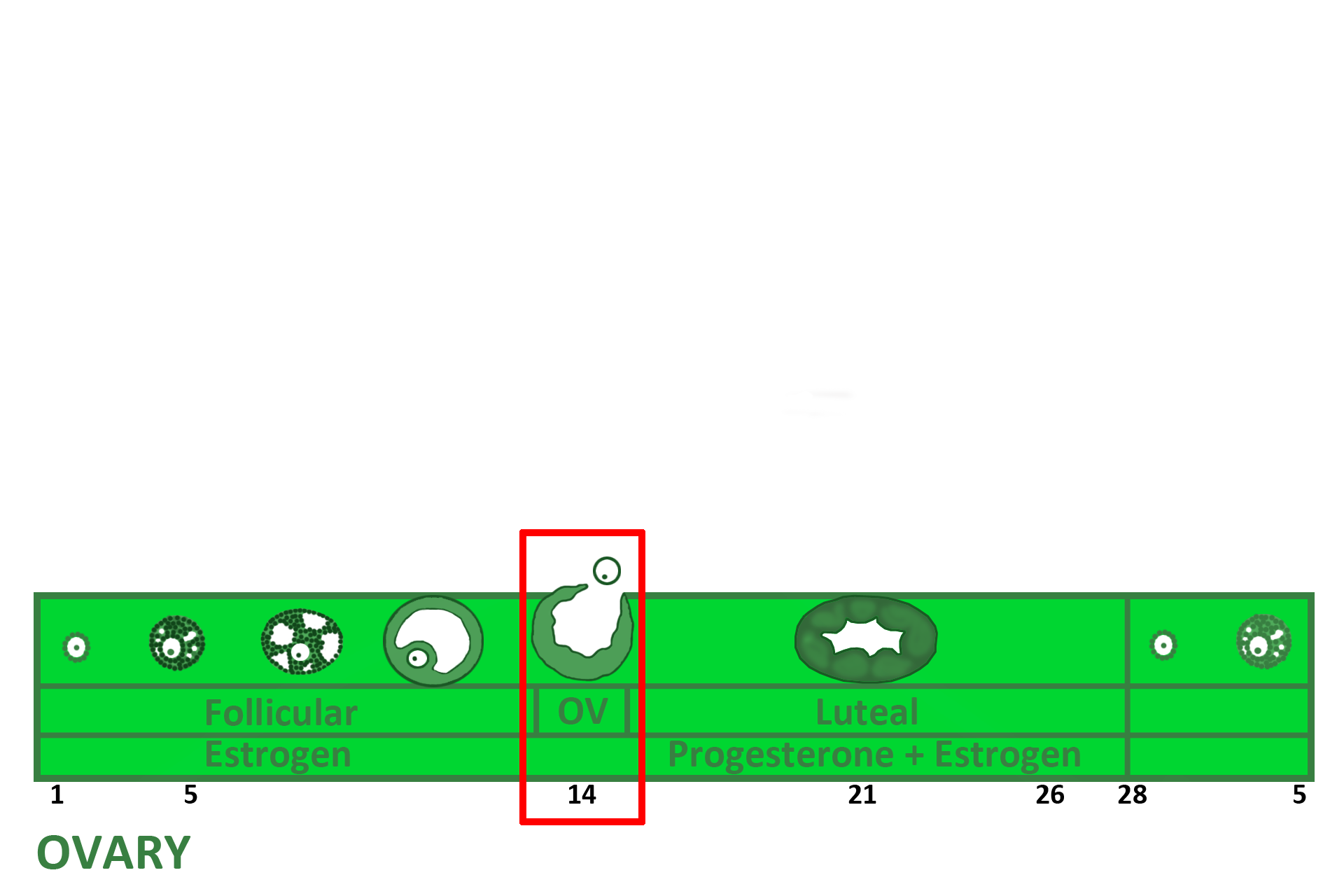
Oviduct
The oviduct (Fallopian tube) is a tubular organ, interconnecting the ovary with the uterus. The oviduct has four segments: infundibulum with fimbria, ampulla (site of fertilization), isthmus and intramural. The oviduct transports the secondary oocyte and sperm to the site of fertilization and the embryo toward the uterus. The oviductal epithelium possess secretory and ciliated cells. 40x

Mucosa >
The mucosa has highly branched folds in the infundibulum and ampulla, dividing the lumen into channels. These folds diminish in the isthmus and intramural portions. Ciliated cells are most numerous in the infundibulum, whereas secretory cells predominate nearer the uterus. A muscularis mucosa is lacking, so the lamina propria and submucosa form a continuous connective tissue layer.

Lumen
The mucosa has highly branched folds in the infundibulum and ampulla, dividing the lumen into channels. These folds diminish in the isthmus and intramural portions. Ciliated cells are most numerous in the infundibulum, whereas secretory cells predominate nearer the uterus. A muscularis mucosa is lacking, so the lamina propria and submucosa form a continuous connective tissue layer.

Muscularis externa >
The muscularis exerna of the ampulla is described as having inner circular and outer longitudinal muscle layers, but these layers are not as well defined as they are in the digestive system. The larger blood vessels supplying the oviduct are seen surrounding this smooth muscle layer.

Mesosalpinx >
The oviduct is supported by the mesosalpinx, a portion of the broad ligament which is double-layered fold of peritoneum that also supports the uterus and ovary. It conveys blood vessels to these structures.

Blood vessels
The oviduct is supported by the mesosalpinx, a portion of the broad ligament which is double-layered fold of peritoneum that also supports the uterus and ovary. It conveys blood vessels to these structures.

Oviduct function >
Oviduct — Because one of the functions of the oviduct is to transport oocytes to the site of fertilization, the oviduct must be at peak functional activity at the time of ovulation. Therefore, stimulated by estrogen secreted by the follicles from days 1-14 of the ovarian cycle, the ciliated and secretory cells of the oviductal epithelium are most active at ovulation.

Next image >
The next image is similar to the area outlined by the rectangle.

Image source >
This image was taken of a slide from the University of Cincinnati collection